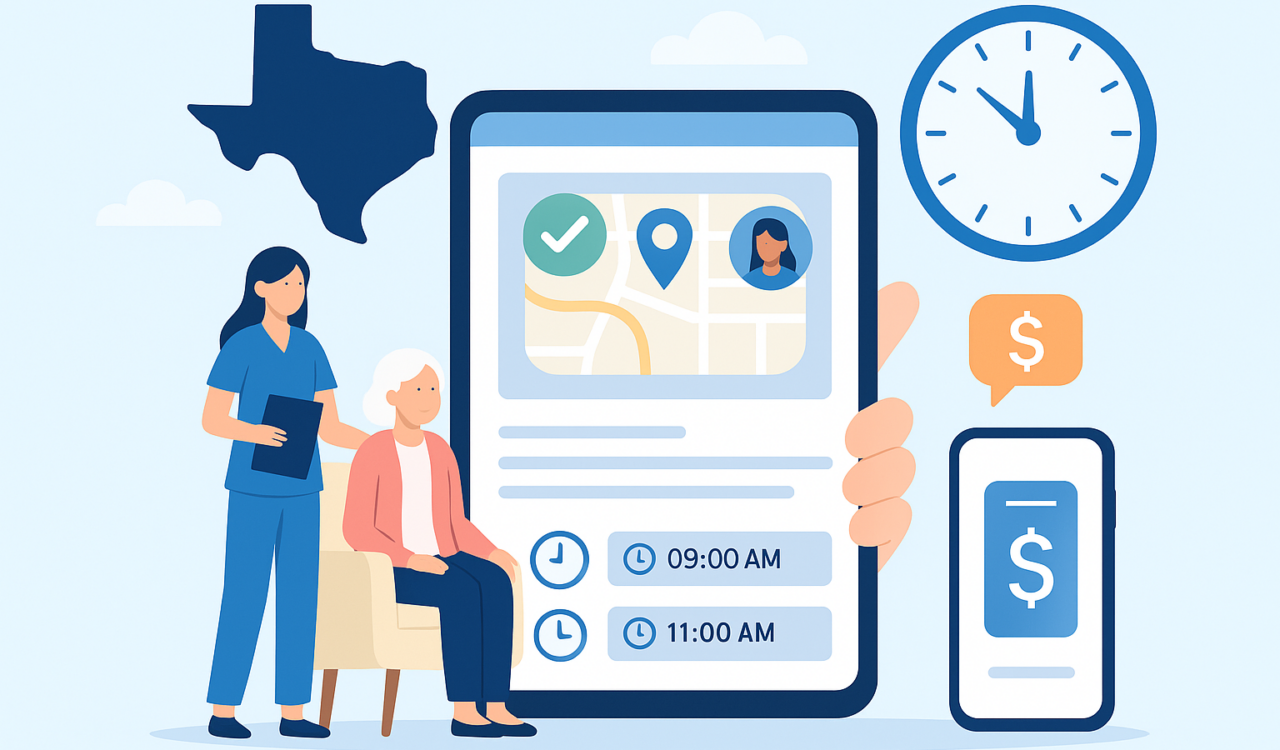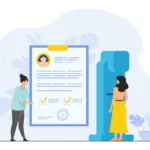Electronic Visit Verification (EVV) is a federally mandated system under the 21st Century Cures Act, requiring home health and personal care providers funded by Medicaid to electronically verify their service visits.
This helps:
- Prevent fraud
- Ensure care is delivered as authorized
- Protect federal Medicaid reimbursements
In Texas, EVV became mandatory on January 1, 2021. Failure to comply can result in claim denials, financial penalties, and ineligibility for Medicaid payments.

What Does EVV Track?
Texas EVV systems must electronically capture:
- Type of service provided
- Date and time the service starts and ends
- Name of the Medicaid recipient
- Caregiver (Service Provider) identity
- Location of service delivery
This data must be captured in real time using:
- Mobile EVV apps
- The client’s landline phone
- An HHSC-approved alternative device
Who Must Use Texas EVV?
EVV is required for:
- Home and community-based services funded by Medicaid
- Managed Care Organizations (MCOs)
- Financial Management Services Agencies (FMSAs)
- Consumer Directed Services (CDS) Employers
Note: EVV is not yet required for Service Responsibility Option (SRO) services, but that may change in future updates.

Texas Medicaid EVV Requirements
To stay compliant, Texas providers must:
1. Select an EVV System
Choose one of the following:
- State-provided EVV system (free)
- HHSC-approved proprietary EVV system
2. Begin the Onboarding Process
Submit all required forms and complete system and policy training through the TMHP Learning Management System (LMS).
3. Submit Visit Data Within 60 Days
All visit logs must be entered into the EVV system within 60 calendar days of the service date.
4. Maintain a 90% Compliance Score
HHSC requires providers to uphold a 90% EVV Initiative Provider Compliance Plan (PCCP) score. This includes:
- Timely visit entry
- Proper reason code usage for edits
- Accurate system usage
What’s New in EVV for Texas?
To support EVV for Home Health Care Services (HHCS), Texas Medicaid has rolled out key updates:
EVV Terminology Updates
- “Attendant” changed to “Service Provider”
- “Clock In/Out” renamed to “Bill Time In/Out”
EVV Portal Enhancements
- New fields: Member Name, Phone In/Out, Visit Location In/Out
- Expanded reports with fields like: Rounded Actual Hours, Schedule Type
- Renamed EVV Service Provider reports for clarity
- Streamlined file formats for Excel and CSV downloads
- Improved tracking for claim reconciliation
These updates improve compliance tracking and billing accuracy for agencies and caregivers alike.
What This Means for Your Home Health Agency
Greater Accountability
Caregivers must document visits accurately, with time, location, and service details verified in real time.
Better Visibility
EVV helps create a clear audit trail—valuable for compliance, quality checks, and dispute resolution.
System Flexibility
You can choose an EVV platform that fits your workflow, whether you prioritize caregiver scheduling, payroll, or claims processing.

How allGeo Helps You Stay EVV Compliant in Texas
allGeo offers a fully integrated EVV platform that simplifies field operations for home care agencies.
With allGeo, you can:
📍 Mobile access with GPS tracking
🌐 Offline functionality for poor network areas
📄 Digital forms for field data
⏰ Real-time alerts for missed check-ins
💸 Seamless payroll and claims integration
allGeo is built to reduce administrative burden and improve compliance—so you can focus on care delivery.
Conclusion
As EVV regulations evolve in Texas, it’s critical to stay ahead. The right technology partner can help your agency comply with minimal disruption—while boosting efficiency and visibility.
Start Your EVV Journey with allGeo
Ready to make Texas EVV easier for your team?
👉 Start your free trial – no credit card required
👉 Request a demo – see how allGeo can support your agency’s specific needs



